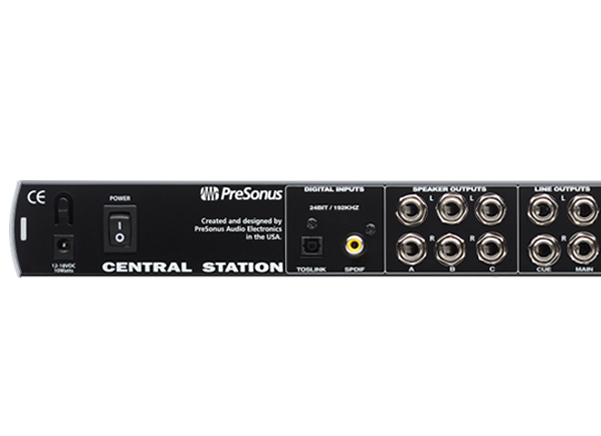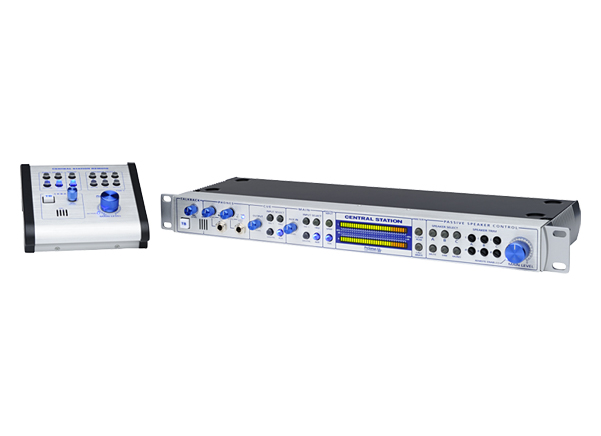Introducing the PreSonus Central Station PLUS
When you want to switch between multiple sets of monitors and multiple analog and digital sources to hear exactly what your mix sounds like, with no coloration, you need the PreSonus Central Station PLUS professional monitor controller.
Its audiophile-quality, passive signal path, with no op-amps or ICs, and its S/PDIF inputs with 24-bit, 192 kHz D/A converters ensure the sonic transparency that pros need.
And because Central Station is a 1U rack-mount device, with only one multi-conductor cable running to the remote control on your desktop, all of the cabling is in the back of your rack, keeping things organised.

A variety of connections
With Central Station, you can easily switch between three sets of stereo, analog input sources and one stereo digital input source. You can audition these sources with up to three pairs of speakers, with individual trim pots for each speaker. You also get two screaming-loud headphone amplifiers with individual level controls. If that’s not enough, simply connect the line-level cue outputs to a headphone distribution system, such as a PreSonus HP2, HP4 or HP60.

Audiophile-quality sound and quality components
The Central Station uses the highest-quality passive components, including military-grade, 1% tolerance, metal-film resistors, multi-element potentiometers and durable connectors to deliver the highest sonic performance. This ensures the most transparent signal path and maximizes dynamic range, frequency response, and headroom while minimizing noise and coloration.

Multiple features for a complete monitoring solution
The Central Station includes plenty of extras to make your studio work easy and efficient. A footswitch input enables hands-free talkback operation. A Mono switch sums the stereo source so you can check for phase problems, and Dim and Mute switches let you reduce or mute the speaker outputs without changing the referenced position on your main level knob. Talk to the musicians over the headphone and cue buses using the onboard talkback microphone, or connect a dynamic mic to the XLR Talkback input. Plus, the included CSR-1 remote control lets you manage it all from your desktop.

